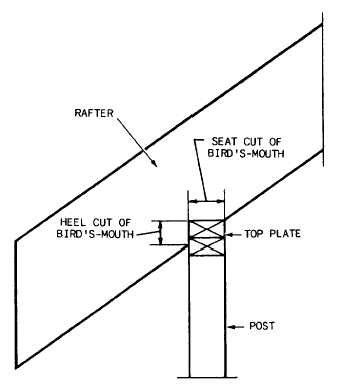Figure 6-27.-Bird’s-mouth on a rafter with projection.
ridgeboard or, if the ridgeboard is omitted,
against the opposite rafters (fig. 6-25).
SEAT, BOTTOM, OR HEEL CUT—The cut
made at the end of the rafter that is to rest on
the plate.
SIDE, OR CHEEK, CUT—A bevel cut on the
side of a rafter to fit against another frame
member.
EAVE OR TAIL—The portion of the rafter
extending beyond the outer edge of the plate.
Figure 6-26 shows additional terms used in
connection with rafter layout.
RAFTER LENGTH is the shortest distance
between the outer edge of the plate and the center
of the ridgeline.
MEASURE LINE is an imaginary reference
line laid out down the middle face of the rafter.
PLUMB LINE is any line that is vertical when
the rafter is in its proper position.
LEVEL LINE is any line that is horizontal
when the rafter is in its proper position.
A rafter with a projection often has a notch
in it called a BIRD’ S-MOUTH (fig. 6-27). The
plumb cut of the bird’s-mouth that bears against
the side of the rafter plate is called the HEEL
CUT, whereas the SEAT CUT bears on top of
the bird’s-mouth. COLLAR TIES (fig. 6-28)
are horizontal members used as reinforcement
in gable or double-pitch roof rafters. In a
finished attic, these ties may function as ceiling
joists.
When the rafters are placed farther apart,
horizontal members called PURLINS are placed
across them to serve as the nailing or connecting
members for the roofing. Purlins are generally
used with standard metal roofing sheets, such as
galvanized iron or aluminum sheets.
Several methods of roof framing and types of
rafter arrangement
6-29 through 6-36.
are further shown in figures
Figure 6-28.-Layout of a collar tie.
6-23



